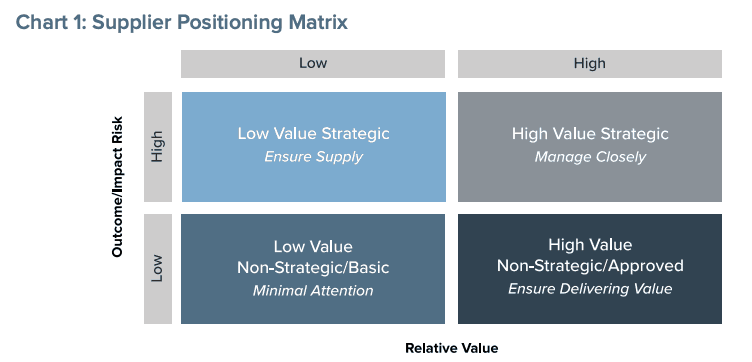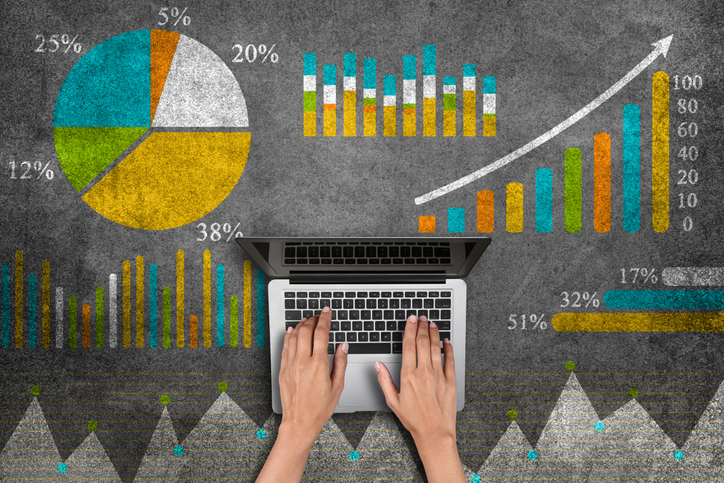13 Sustainable Procurement Tactics That Drive Real Results

Two-thirds of the average company’s environmental, social, and governance (ESG) impact comes from suppliers.
Between 70-90% of a company’s carbon footprint comes from its supply chain.
Those of us in the procurement world have the opportunity to drive real change, and with that opportunity comes the responsibility for action.
Now if like most people, you’re saying, “sustainability is a huge global issue, how am I supposed to make a difference?” you’ve come to the right place.
Here are 13 sustainable procurement tactics that will drive real results.
Sustainable Procurement Tactic #1: Start Small
You don’t have to be a Fortune 50 company to make a difference. The little things add up to make a huge impact.
No one is expecting you to solve climate change or deforestation on day one.
But you can start by planting trees in your local community or talking to your top suppliers to develop a more eco-friendly packaging or transportation option.
You’ll be surprised what kind of creative solutions you can come up with just by starting a conversation with a supplier.
Sustainable Procurement Tactic #2: It Has to Start at the Top
It’s very difficult make any large changes without leadership buy-in and making the business case for investment has been a struggle in procurement for a long time.
But sustainable procurement isn’t something that just happens, and quite frankly, is usually a result of an internal culture shift more often than not.
Leadership has to be on board with sustainability and be a model of action, not empty words.
From there you need to work with your buyers and suppliers to set realistic goals, educate everyone on the benefits, and understand that nothing will happen overnight.
There needs to be guidelines in place for how to have these conversations with suppliers and how to actually set up supplier development plans centered around sustainability.
No matter how good a cause may be, change is hard, and good change management can be even harder if leadership isn’t bought in.
Sustainable Procurement Tactic #3: Create a Materiality Matrix
Pretty common in the world of ESG, a materiality matrix is simply a visual representation of what matters to your stakeholders in relation to how much of an impact it makes on the business.
This helps you figure out where your priorities should be.
There’s no point trying to start a program that your stakeholders don’t care about, and there’s no use for procurement to start an initiative that has virtually no business impact.
This is all about honing in on what’s important and realistic. This is a journey, it’s not going to all happen at once.
Think about where you can make an immediate impact. Is it partnering with a supplier to plant trees in a local park? Is it reducing waste with certain packaging materials?
Maybe it’s starting an internal “circular economy” program to reuse materials throughout your value chain.
Every company will have a different mix but it’s a great way to figure out your priorities and start making headway.
Sustainable Procurement Tactic #4: Value > Cost
Sustainability and ESG are priorities for a lot of buyers and suppliers alike. But are you actually willing to spend more on a more sustainable option?
Cost isn’t the same everywhere. Bottom-line cost isn’t the same as front-line cost. Instead of worrying so much about the direct cost of a good or service, look at the total value of it.
What’s the total cost of ownership? Will you get better deals with this supplier as the relationship progresses? Are you going to save more on utilities down the line by going this route? Will packaging or transportation become less expensive? Can it be recycled and reused for something else in your business?
These are all things to consider and your internal buyers need to be educated on the distinction between cost and total value.
Sustainable Procurement Tactic #5: Segment your Supply Base

If you run much supplier relationship management you already do this, but now look at it through the lens of sustainability.
What suppliers do you know are passionate about sustainability? Who isn’t and why?
Just by separating them based on that will help you get a much clearer picture of what you need to do in terms of supplier development.
From here it’s about embedding this into your supplier onboarding and RFx processes. Ask sustainability-related questions and make sustainability assessments a requirement.
You may get some pushback at first but they’ll usually come around once you explain your reasoning, and if they don’t, you probably wouldn’t want to work with them anyway.
Sustainable Procurement Tactic #6: Set Your Guardrails
Every good strategy needs guardrails. Without them, it’s really easy to fall off track and fail.
You need to figure out what your non-negotiables are. Maybe for you that means that you’ll only work with suppliers who have an EcoVadis rating above 40.
Or maybe it’s tied to their internal CSR initiatives.
No matter what it is you have to stick to it. Don’t be afraid to walk away if a supplier isn’t up to par.
As long as your expectations are clear and realistic you can feel confident that you’re doing what’s in the best interest of your company.
Sustainable Procurement Tactic #7: Collaboration not Competition
This is a group effort. It takes all of us and that means that we shouldn’t be afraid to collaborate.
You have to put in the time with your suppliers to educate them and help them develop. Most companies aren’t very advanced with sustainability yet and we’ll never get there if we don’t start working together.
That’s not to say that if you and a supplier come up with a brand-new packaging solution that’s a competitive advantage that you should go tell everyone in your market.
But it does mean that supplier development and collaboration have to become a priority and you shouldn’t be afraid to share what strategies have worked for you.
Sustainable Procurement Tactic #8: Figure out your KPIs

Every strategy needs KPIs. You can’t manage what you don’t measure.
A few sustainable procurement KPIs to keep an eye on are:
- Freight distance & green freight distance
- Carbon emissions
- % Sustainable suppliers
- % Growth of sustainable suppliers
- Value chain savings
- % Waste and recyclable materials
- Utility consumption (water & energy)
These are just a few of the highlights. Your sustainability program may look much different.
It all comes back to your materiality matrix. Figure out what’s most important to your stakeholders and map out how to get there and measure progress.
But remember, be realistic. Things won’t change overnight.
Sustainable Procurement Tactic #9: Know your Emissions
Circling back to the fact that up almost 90% of a company’s emissions can be in the supply chain, you can see the importance of getting visibility.
Carbon emissions are generally broken down into three categories: scope 1, 2 and 3.
Scope 1: Emissions that you make directly in your own offices or factories.
Scope 2: Energy that you’re buying to use yourself. Think utilities.
Scope 3: All of the other emissions connected to your entire supply chain.
You see the dilemma.
Scope 1 and 2 are fairly simple concepts, you can track these with the help of certain technologies and processes, but scope 3?
That involves all of your suppliers, their suppliers, your customers (you get the picture).
It’s nearly impossible to track and is enough to make anyone’s head spin.
The good news is that it’s a priority for several technology companies, the bad news is that we aren’t anywhere close to a comprehensive solution.
But like anything else in sustainable procurement, you have to start small.
Start asking your suppliers to report on their emissions from scope 1 and 2 and do your own emissions reports through scope 1 and 2.
This builds a sort of network to help you get an idea of scope 3 and you can collaborate with your suppliers to move towards a practical net-zero solution.
Sustainable Procurement Tactic #10: Sometimes, You Have to Look Beyond a Rating
Sustainability scores are great, but sometimes they don’t paint the full picture.
Or sometimes you may not trust the validity of the information a supplier provided.
Especially in certain high risks categories, you may have to do your own detective work.
This could involve site visits, audits and worker voice programs.
You may get some pushback from suppliers on this but you have to be firm if you’re serious about making this a real strategy.
Going back to #6, figure out your non-negotiables and don’t be afraid to walk away from that relationship if they aren’t interested in collaborating to improve.
Sustainable Procurement Tactic #11: Don’t Let This Become a Barrier for Entry
You obviously care about ESG, you’re reading this blog after all.
That means you probably have supplier diversity on your radar as well.
Unfortunately, there are cases where a diverse supplier may not be able to afford a certain certification or may not be able to have a certain level of insurance or payment schedule.
We can’t let that happen. The point of sustainable procurement and ESG is to create a better world for everyone, not just who can afford it.
When you’re setting your guardrails and segmenting your suppliers make sure you take into account supplier diversity as well.
These suppliers may need different standards or development programs. This doesn’t mean you need to sacrifice quality or business goals, but it does mean a bit more flexibility.
Work together to build that relationship and I promise it will pay dividends down the road.
Sustainable Procurement Tactic #12: Talent is the Biggest Asset
I don’t think anyone can deny the mindset shift in sustainability.
Consumers are buying more sustainable. Talent is looking to join sustainable companies. Government is stepping in to actively regulate sustainability.
To navigate this you need a team of passionate and talented people.
Sustainable procurement can act as a magnet to attract and retain top talent. People care about being mission-driven, share that mission and assemble a team of like-minded individuals.
This can also be a double-edged sword. We get asked all the time “How can I get top leadership on board?” or “how can we motivate people internally to start caring about sustainability?”.
While there are some tactics, (you can find out how to make the business case here), at the end of the day, if leadership won’t get on board you may have to find new leadership.
Peter Smith, Author of Procurement with Purpose and Managing Director at Procurement Excellence talked about this on a recent panel discussion and said that if you can’t persuade leadership then “ultimately if you’re a procurement person and you believe in this and your company really doesn’t then there are plenty of other companies that do that maybe you should go and work for them.”
I know it’s not always that simple, but the sentiment is true.
There are plenty of places where sustainable procurement is being made a strategic priority. Sometimes you have to make a bold change if you really believe in something.
Sustainability is a great talent magnet but that can also work the other way around. Plan accordingly.
Sustainable Procurement Tactic #13: Just Get Started
If you take anything away from this article at all it’s this: Just do something. Get Started.
It’s easy to look at something like sustainability or climate change and get stuck.
You can spend weeks strategizing and talking about what to actually do, only to look back and realize that nothing ever got done.
We all know that working in procurement it’s really easy to get spread too thin.
Just pick one direction and start running with it.
Paralysis by analysis is real, but the world can’t wait for us to debate the perfect solution.
You don’t need to do it all, you just need to do something.

